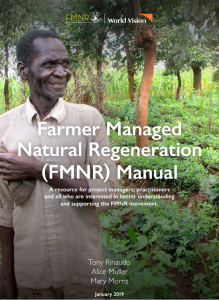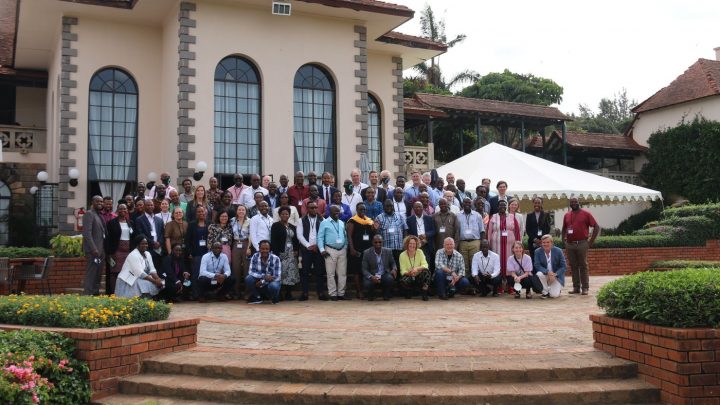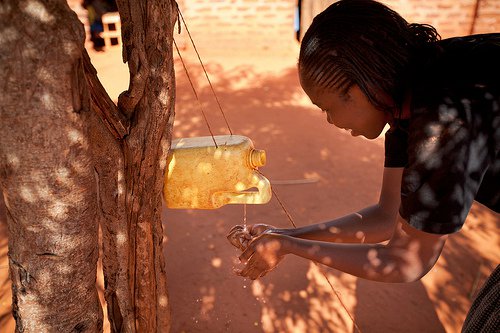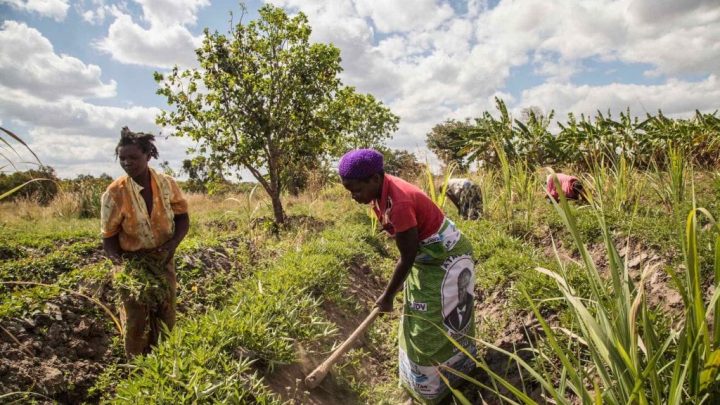FARMER-MANAGED NATURAL REGENERATION
phOTO CREDIT: WORLD VISION AUSTRALIA / SILAS KOCH

FMNR is probably the largest positive environmental transformation in the Sahel and, perhaps, in all of Africa.
- Chris Reij, Sustainable Land Management specialist at the World Resources Institute
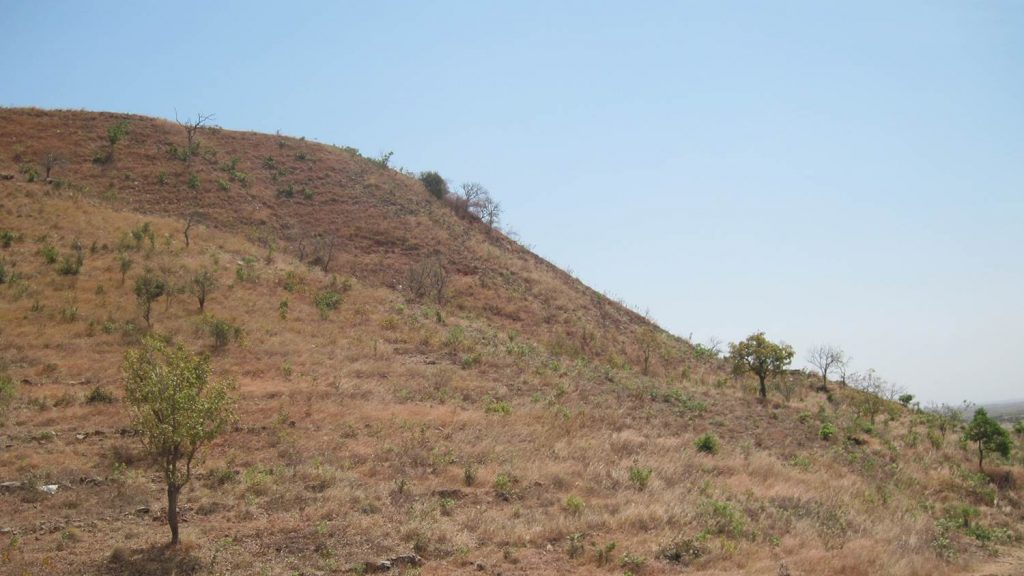
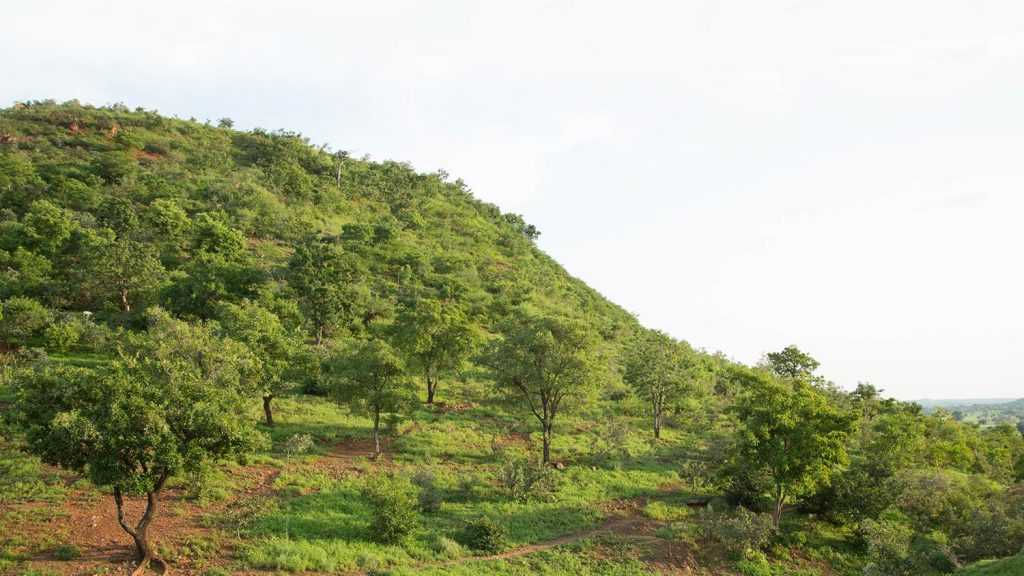
EXPLAINING
FARMER-MANAGED NATURAL REGENERATION
A community-led approach to naturally regenerate degraded landscapes and ecosystems
Farmer Managed Natural Regeneration (FMNR) is a simple, scalable, sustainable land management approach that empowers farmers to stop and reverse land degradation through regrowing trees on farmlands, on grazing lands, and in degraded forests – without requiring any external inputs or expensive equipment. It is used to combat poverty and hunger amongst poor subsistence farmers by increasing food and timber production and resilience to climate extremes.
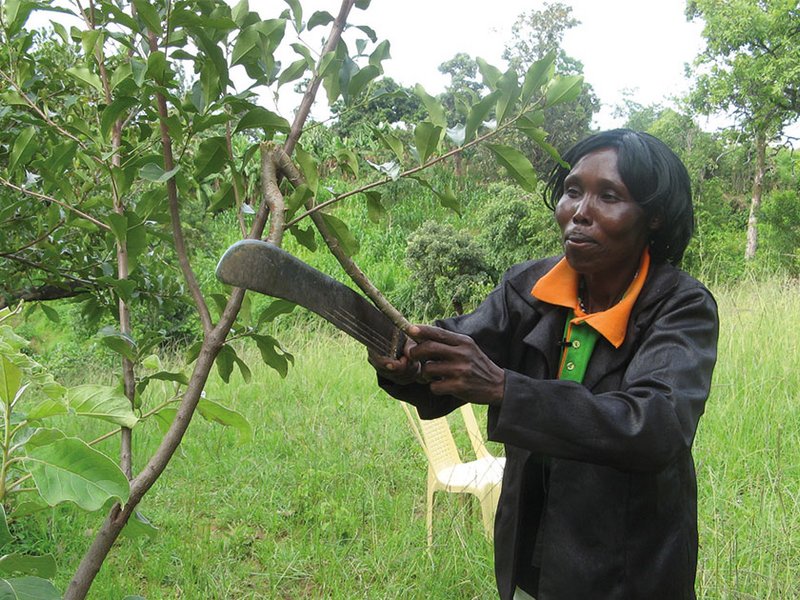
TRANSFORMING LIVES AND LANDSCAPES
HOW DOES FMNR WORK?
FMNR uses Agroforestry, which is the deliberate integration of trees and shrubs into farming systems, but in FMNR, these trees do not need to be bought; the seeds are already there, just hidden within the soil.
FMNR involves the systematic regrowth and management of trees and shrubs from felled tree stumps, sprouting root systems or seeds.
These regrown trees and shrubs are then integrated into crops and grazing pastures, and help restore soil structure and fertility, inhibit erosion and soil moisture evaporation, rehabilitate springs and the water table, and increase biodiversity. Some tree species also impart nutrients such as nitrogen into the soil. After the trees are planted, farmers deliberately protect and manage them through the regeneration of roots and seeds that are already present in the soil. These regenerated trees have a greater chance at survival than transplanted seedlings.
FMNR is closely related to Assisted Natural Regeneration (ANR), which involves protecting and managing natural regeneration, but whereas ANR’s main objective is to restore natural vegetation in degraded forests and rangelands, FMNR’s objective is to add trees to existing croplands.
The Three FMNR Principles
Beneath the soil on many farm landscapes lies a rich expanse of living tree stumps, tree roots, and tree seeds. Given a chance, by stopping burning (which destroys the regrowth), harvesting of ‘suckers’ (stems or re-growth from tree stumps and roots, or from sprouted seeds in the soil) and the continuous grazing by livestock, farmers can quickly and very cheaply regenerate a desirable density of useful, working trees on their farms.
To do so, FMNR follows the following principles:
Principle 1: Use existing resources
Often the tree is already there, but it is underground and we simply need to give it a chance to get established. i.e. FMNR does not have to depend on tree planting.
Principle 2: Prune and Thin
Selective pruning and thinning of this regrowth is beneficial for the growth and the form (shape) of the trees. Correct pruning seems to stimulate rapid growth and results in taller, straighter, more useful tree trunks being formed.
Principle 3: Engage the Community
The third principle is individual and community engagement. It requires agreement to a set of rules developed and agreed to by the stakeholders themselves; it is facilitated by enabling policies such as ‘the right for individuals and communities to benefit from their work’ through legal harvest of the trees and tree products (fruit, honey, medicines).
To learn all about FMNR, check out the FMNR Hub. The Food Security & Natural Resources team at World Vision Australia have also put together the most comprehensive FMNR manual currently available.
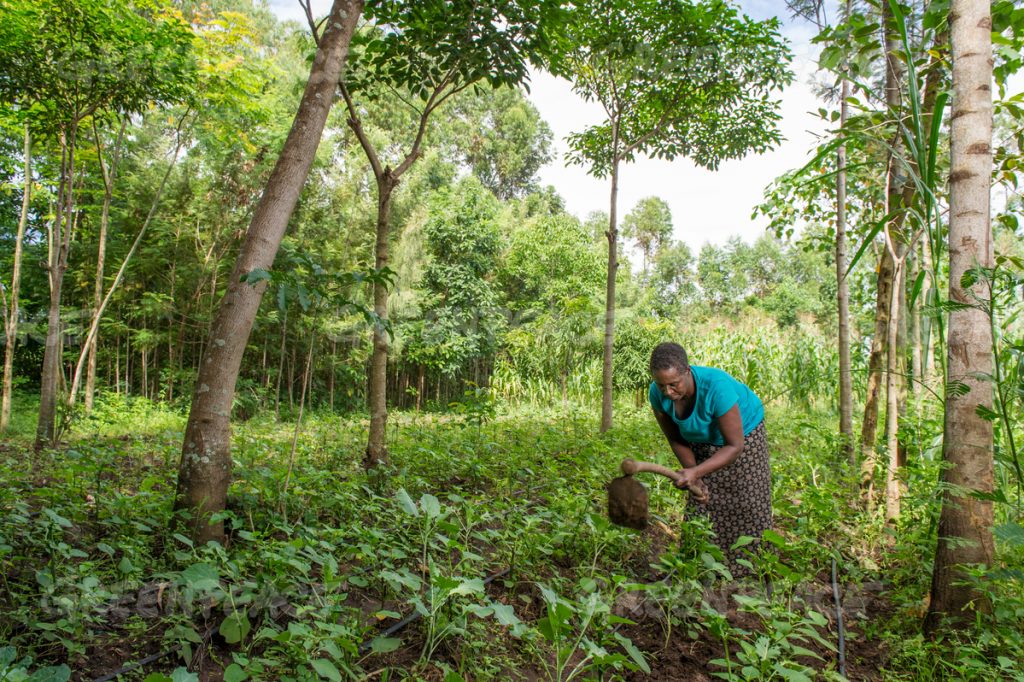
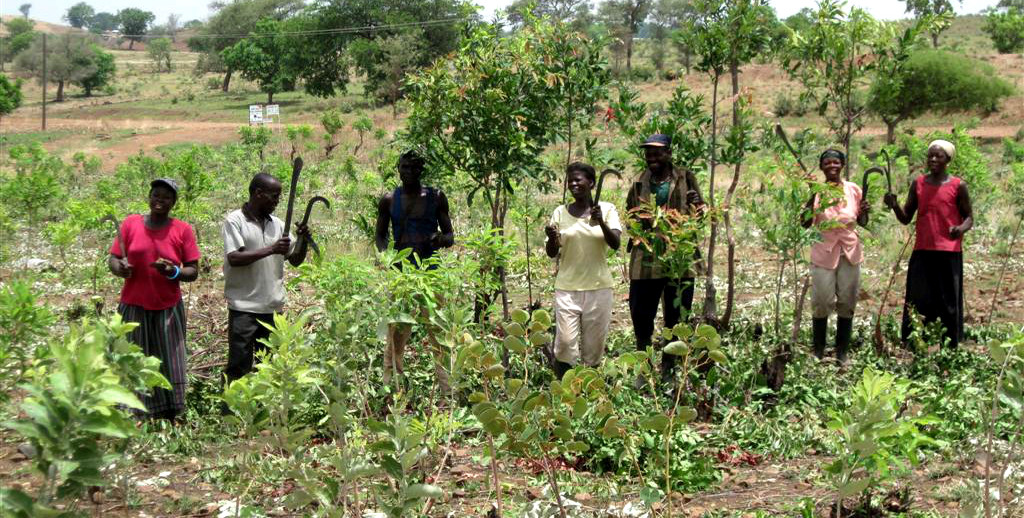
FMNR APPLICATIONS
WHY IS FMNR SUCCESSFUL?
Across Africa, poor land management exacerbates the problems caused by extreme rainfall patterns—drought and heavy rain. Deforestation and land degradation erode top soil, reduce soil fertility, increase air temperatures, and lead to other negative outcomes. These in turn amplify the impact of drought and flood cycles that contribute to crop failures and famine.
Using FMNR on farmland can double crop yields, provide building timber and firewood, fodder and shade for livestock, wild foods for nutrition and medication, and increased incomes and living standards for farming families and their communities. This leads to more complex, more productive, and more drought-resilient farming systems.
Comparing FMNR to other methods
Conventional approaches to reversing desertification, such as funding tree planting, rarely spread beyond the project boundary once external funding is withdrawn.
By comparison, FMNR is cheap, rapid, locally led and implemented, using local skills and resources – the poorest farmers can learn by observation and teach their neighbours.
Trials, long-running programs, and anecdotal data indicate that FMNR can at least double and often triple crop yields on low fertility soils. FMNR can restore degraded farmlands, pastures and forests by increasing the quantity and value of woody vegetation. A growing evidence base of research studies indicate that FMNR builds environmental, economic, and social capital helping some of the poorest farmers secure the “5 F’s” i.e. food, fertilizer, fuel, fibre, and fodder.
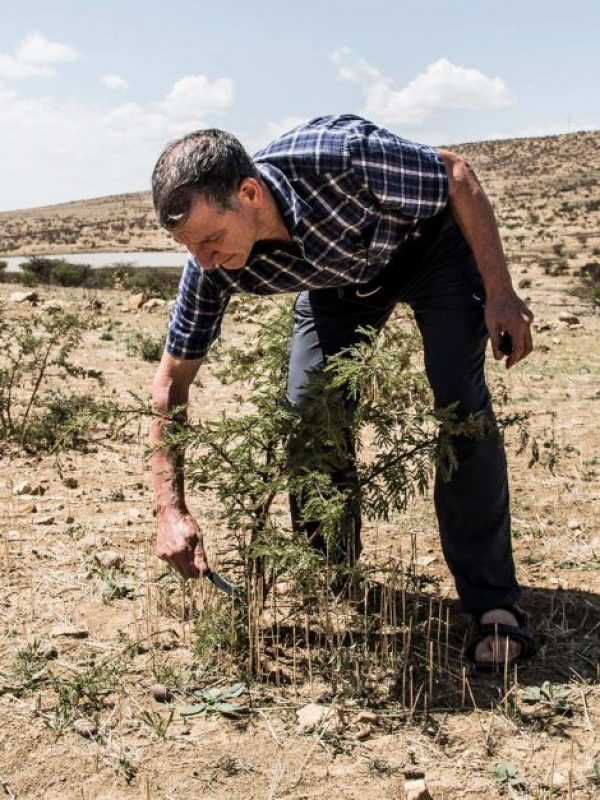
story
THE FOREST MAKER
FMNR has been practiced in one form or another for centuries in various parts of the world. However, the origins of the FMNR ‘movement’ were in Niger Republic in the early 1980’s.
In 1983, while changing a flat tire on a dirt road in Niger, Tony Rinaudo noticed small green leaves sprouting from a nearby tree stump. He saw that the stump growth, unlike trees he had tried planting in arid farmlands nearby, was thriving without any human intervention. When he introduced the concept to farmers as part of an agricultural development program, showing them how to select the best trees for regeneration, it set in motion a “re-greening” movement that has restored tree cover to 17.3 million acres (7 million hectares) of land.

In every direction there were no trees. But then these shrubs caught my eye, and I suddenly realized this wasn’t a shrub but a tree trying to regrow.
- Tony Rinaudo, the Forest Maker
EFFECTS ON THE GROUND
FMNR'S IMPACTS TODAY
In the Sahel region of Africa and around the world, FMNR revitalizes the land by improving soil structure, slowing erosion, retaining water, and increasing biodiversity at virtually no cost to the farmer. With measurable improvements in yields, income diversification, and environmental benefits, FMNR is an important tool for building improved and resilient livelihoods for smallholder farmers.
Since this formal approach to FMNR started to take root in the 1980s, World Vision has promoted it in 24 countries in Africa, Asia, and the Caribbean. In the last 10 years alone, 2.5 million acres (1 million hectares) of land have been regenerated by World Vision alone, impacting more than 6 million people by improving crops and reducing hunger.
Case Studies
FMNR’s Spread through Niger
Since the middle of the 1980s smallholder millet-growing farmers in densely populated parts of Southern Niger (rainfall 400–600 mm/yr) have been protecting and managing trees and shrubs that regenerate spontaneously on their farmland. Where they once had 2 or 3 trees per hectare in the 1980s, they now have 20, 40, 60 trees per hectare or more.
Until 2004, the scale at which farmers had been protecting and managing natural regeneration on-farm was not known. Studies had been conducted in the region looking at long-term trends, but those studies limited themselves to a selected sample of villages. One of the findings was that farmers now had more on-farm trees.
Recent mapping studies have confirmed that the practice of FMNR on farmlands is Niger now exceeds 7 million hectares as shown in the aerial photo below.
FMNR in Malawi
Farming households in Malawi highly value trees within their farming systems. Farmers have encouraged the regeneration of trees in fields and around their households by protecting naturally regenerating indigenous seedlings, by
planting trees and by leaving favoured trees in fields when woodlands are cleared prior to cultivation. They protect a wide variety of trees regenerating on their land.
FMNR is becoming widespread in Malawi. Recent mapping work has shown that more than a million farmers are practicing it throughout the country.
Household with faidherbia in fields
FMNR in India
The Prosopis cineraria tree is are an extremely valuable source of green and nutritious fodder for livestock in the semi-arid zones of Rajasthan, India. These trees were established through FMNR practices and now cover an estimated area of about 5 million hectares in the State of Rajasthan.
